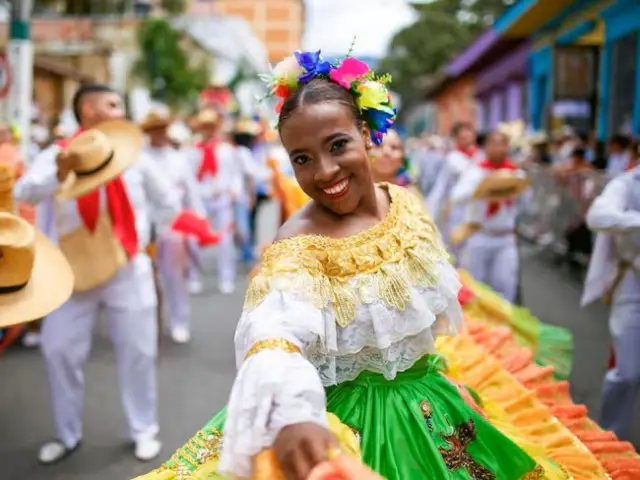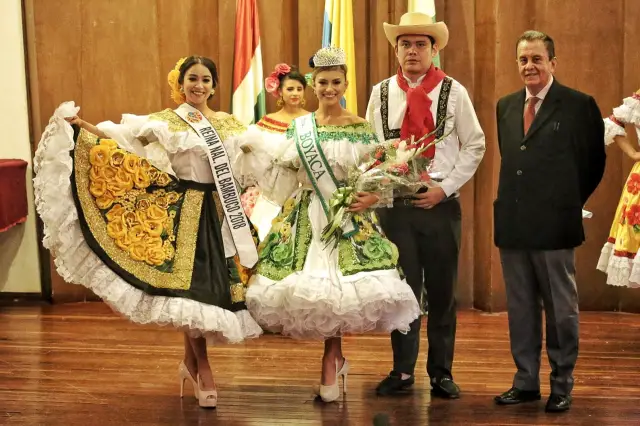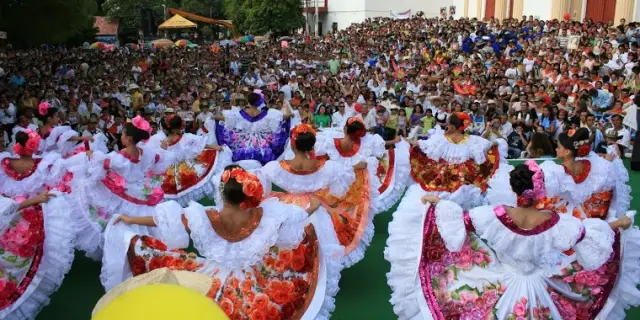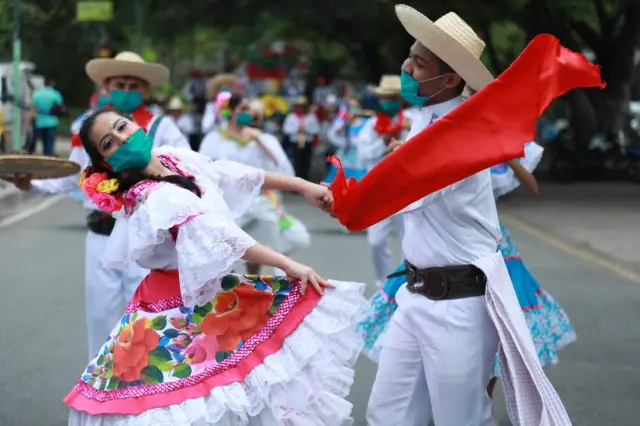The National Bambuco Folklore Festival and Pageant is the most important cultural event in southern Colombia and is held every year in the city of Neiva , capital of the Huila department. This festival not only celebrates the richness of the Huila bambuco , but also becomes a platform for artistic expression and regional identity. For several weeks, Neiva transforms into a stage of color, music, and tradition where native rhythms, traditional costumes, and the warmth of its people captivate thousands of national and international visitors. In this article, you will discover everything you need to know about the origins of the festival, its outstanding program, how to enjoy it to the fullest, and the central role of the National Bambuco Pageant as an icon of Colombian tradition.
History and origin of the Folklore Festival
Beginnings of the Huila bambuco
The bambuco , considered one of Colombia's most representative traditional rhythms, has deep roots in Huila. Its origins date back to the cultural expressions of peasants and indigenous people during the colonial era, who fused Spanish melodies with African sounds and elements native to the region. In Huila, this musical genre flourished as a way to narrate rural life, love, and the feelings of the people. In every lyric and chord lies the soul of a land proud of its folklore, which has managed to keep this tradition alive through generations.
Consolidation of the popular event
The Festival began to take shape in the 1960s when the Neiva Mayor's Office decided to institutionalize the popular celebrations of San Pedro and San Juan. Since then, the event has evolved to become one of the most important cultural gatherings in Colombia. Its inclusion in the national calendar of official festivities and the support of the Ministry of Culture have catapulted it to international acclaim. Today, the festival not only celebrates Huila's roots but also promotes peace, tourism, and cultural development throughout the country.

National Bambuco Reign
Central pillar of the festival
The National Bambuco Pageant represents the most anticipated moment of the festival. Each year, candidates from all departments of Colombia gather in Neiva to compete for the crown, demonstrating their knowledge of Huila culture, their talent in bambuco dancing, and their commitment to national identity. This competition is not just a beauty pageant; it is a showcase of female empowerment, cultural expression, and the preservation of the country's ancestral traditions.
Election process
The contestants participate in multiple events, including dance performances, interviews with the judges, a parade in traditional costume, and tests of knowledge about the bambuco and Colombian folklore. One of the most symbolic moments is the performance of the Sanjuanero Huilense, an emblematic dance that demands precision, grace, and profound respect for technique. The contestants must prepare intensely, as each step counts toward their final score.
Profile that the jury is looking for
The jury is made up of experts in dance, music, culture, and pedagogy, who evaluate not only the contestants' artistic performance but also their charisma, attitude, and historical knowledge of the festival. The chosen queen must be a worthy ambassador of Huila and the Colombian identity, capable of bringing the message of folklore to every corner of the country and the world.

Activities and characteristic programming
Folklore parades
During the festival, the streets of Neiva fill with comparsas, dance groups, and delegations from all over the country parading to the rhythm of the bambuco, the rajaleña, and other traditional rhythms. The folkloric parades are an explosion of color, joy, and creativity that blend cultural roots with contemporary expressions. From decorated floats to live performances, each event is a living manifestation of love for one's own culture.
Dance competition
One of the most acclaimed events is the National Folk Dance Competition, where groups from different regions present choreographies that exalt the folklore of their communities. Judges reward originality, technical execution, cultural fidelity, and emotional connection with the audience. This event has become a key platform for promoting research and conservation of the country's intangible heritage.
Musical events
The festival also hosts concerts, recitals, and cultural evenings with local, national, and international artists. Open-air venues like the Jorge Villamil Cordovez Music Park host leading exponents of folklore, as well as new generations who fuse traditional and modern music. It's an opportunity to enjoy the country's diverse sounds, from Andean strings to Afro-Colombian drums.
How to attend: Practical guide
Dates and tickets
The festival takes place in late June and early July, coinciding with the San Juan and San Pedro festivals. Tickets for the main events can be purchased at authorized locations or through digital platforms. It is recommended to purchase tickets in advance, as many shows sell out quickly due to high tourist demand.
Accommodation and logistics
Neiva offers a wide range of hotels, from luxury to budget accommodations. There are also rural lodging options in nearby towns such as Rivera, Campoalegre, and San Agustín. It's essential to book in advance and verify the hotel's location relative to the main festival venues to facilitate transportation and safety.
Transportation in Neiva
The city is served by Benito Salas Airport, which receives daily flights from Bogotá, Medellín, and other major cities. It is also accessible by road from various points across the country. During the festival, public and private transportation routes are available to easily travel between the various events and parades.

Economic and cultural impact
Reactivation of tourism
The festival significantly boosts the region's economy, attracting thousands of tourists who consume local products, stay, purchase handicrafts, and enjoy traditional cuisine. It also creates temporary employment and stimulates sectors such as transportation, hospitality, fashion, and advertising.
Cultural preservation
Beyond entertainment, the National Bambuco Folklore Festival and Pageant is a tool for cultural education. Schools, academies, and foundations participate each year to train new generations of musicians, dancers, and folklore historians. It is an event that reaffirms the Huila identity and strengthens social cohesion around shared roots.
Frequently Asked Questions (FAQ)
When is the Folklore Festival in Neiva?
The festival is primarily celebrated between the last week of June and the first week of July. Dates may vary each year according to the official calendar.What should I bring to enjoy the festival?
Light and comfortable clothing, sun protection, walking shoes, a hat or cap, and a desire to have an unforgettable experience.Is it suitable for children and older adults?
Yes, many events offer priority access areas, health services, and activities for the whole family, including children's presentations.Where can I get traditional costumes?
In specialty stores in Neiva and nearby municipalities, or through artisans who make traditional attire using ancestral techniques.How can I participate as an artist or dancer?
You can register through the Neiva Mayor's Office or the Festival Foundation's announcements published several months in advance.
